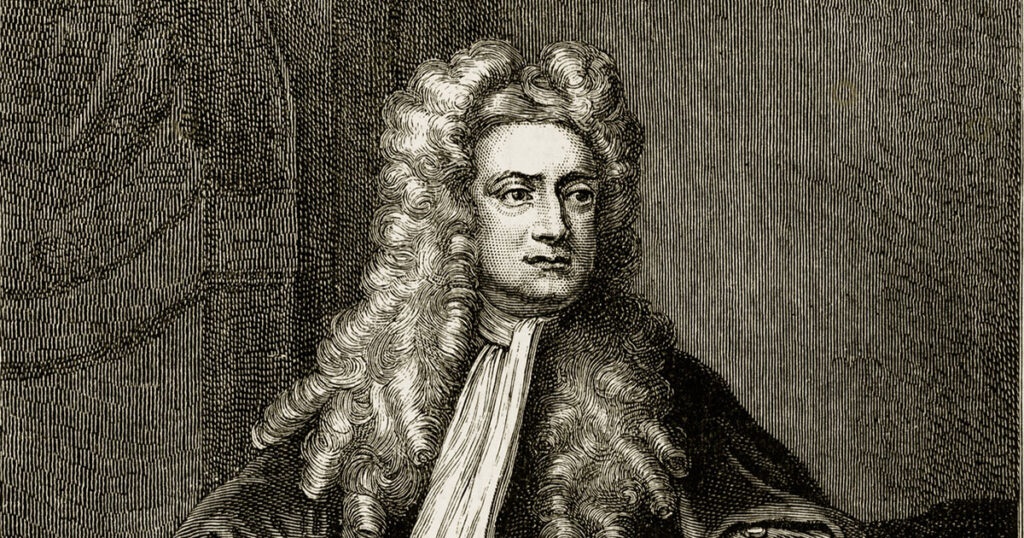
Who is Sir Isaac Newton?
Sir Isaac Newton was an English Physicist, mathematician, scientific and a genius who brought about a scientific revolution in the seventeenth century. Newton is one of the most influential scientists who ever lived. One of his most important works was the law of gravity.
Sir Isaac Newton was born on 04th January, 1643, in England to Hannah Ayscough and Isaac Newton. His father passed away three months before Isaac was born. His mother remarried later. Isaac was brought up by his grandmother.
The young Isaac attended the King’s School, Grantham, for his primary education. He was very good academically and was one of the top students at his school. His family was not well off, so Isaac also worked to support his family.He left his studies and started working as a farmer. His school to finish his mother to send him back to the school to finish his studies, and so Isaac graduated with the highest score.
Qualifications and School Journey of Isaac Newton
In 1661- Newton went to Trinity College, Cambridge. Attending the university was the most important decision he took in his life. He was able to pursue his interest in mathematics, astronomy and physics. At that time, the education system was based on Aristotle’s model, who was a great philosopher.
Newton was more involved in the modern syllabus and used to read other philosophers’ works. Newton became a professor of mathematics. He taught advanced maths. He was also a allow of the Royal Society, which s an organization of scientists in the United Kingdom.
In 1665, his university was shut down for two years due to the plague. Thus, Newton came back home. He spent his days studying calculus theories and the law of gravitation. He had soon mastered mathematics. He graduated with an arts degree in 1669
Life Achievements of Newton
After completing his education, Newton fully focused on his inventions. His major achievements include the study of optics, telescopes, and the law of gravitation. He spent years studying colors and light before he presented his inventions to the society.
He researched with the help of a prism. He proved that sunlight was constituted of all the colors of the rainbow. Newton also explained the concept of white light and how it carried all the colors found in nature.Newton’s second achievement was inventing the telescope. He built a 6-inch telescope that helps him to see Jupiter’s moons. He wanted to see faraway objects sharp and clear. The cured glass lenses used in the telescope worked like a prism.
Opticks Theory
Isaac Newton book on optics and his prism experiments was called Opticks (1704). Robert Hooke was also member of the Royal Society at this time. Hooke found some faults in Newton’s optics theory. Newton was not able to take the criticism very well. He had a very bad nervous breakdown.
The same year, he lost his mother he decided to take a break; Newton came up with the law of gravitation. He combined the failing of the apple on his head with the idea of the moon orbiting the Earth. Later on, his movement of the Planets and the sun.
In 1684, Newton completed his calculations on gravity. Edmund Halley, the famous astronomer and mathematician, visited Newton. Halley wanted Newton’s help to solve a problem he was facing with one of his experiments. He asked Newton to explain to him the path in which a planet moved around the sun. Halley didn’t know that Newton had already solved this question.
Ellipse Theory
Newton and Halley theorized that it was an oval track called an ‘ellipse’. He also showed Halley his other scientific work and calculations. Halley was impressed by Newton and encouraged him to share these theories with the world.
His major success was when he released the book The Mathematical Principals of Natural Philosopher in 1687.the book contained the three laws of motion that set the frameworks for modern physics. It helped scientists in understanding how the universe worked.
Creator of Pi, a mathematical constant
In his later years, Newton became more popular for his scientific work. He formed the well-known formula that calculated the value of Pi, a mathematical constant. In 173, Newton became the president of the Royal Society after Robert Hooke passed away. In 1705, he was knighted by the Queen of England. Isaac Newton died on March 31, 1727, in London, England alongside masterminds like Albert Einstein and Gelileo.
